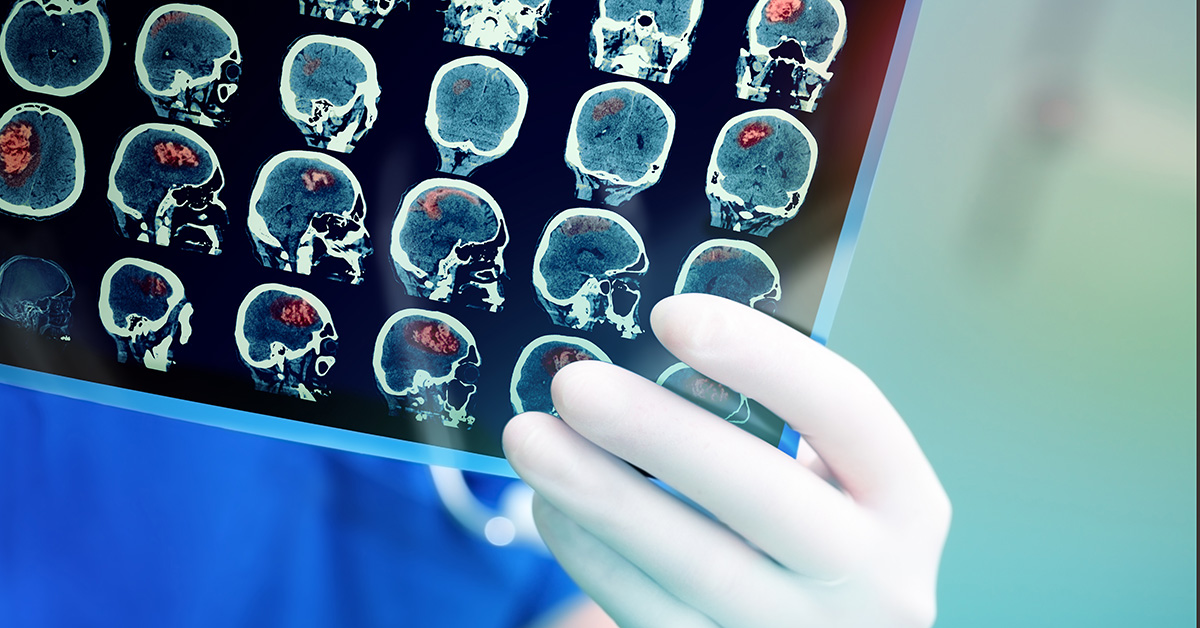
We use our brains to move our limbs, to communicate, to manage our emotions and to think about ourselves and the world around us. Any of these functions can be impaired by a stroke. In fact, stroke is the most common cause of these impairments and the fourth leading cause of death in the U.S.
Stroke is a type of brain injury due to problems in the blood vessels around the brain. The blood vessels may become blocked by a blood clot or a cholesterol plaque, leading to part of the brain being deprived from blood. The other type of a stroke occurs when a blood vessel ruptures causing bleeding inside or around the brain. This is hemorrhagic stroke, and is usually caused by high blood pressure or sometimes by a ruptured brain aneurysm.
Thankfully, there have been major advances in the treatment and prevention of stroke. New medications prevent blood clots more effectively and with fewer side effects. Additionally, advances in neuro-interventional procedures allow treatment of blockages to restore blood flow and treatment of aneurysms to prevent them from rupture. These procedures are called neuro-endovascular procedures because they involve treating the condition from within the blood vessel. After making a very small incision of only a few millimeters in the skin in the upper thigh or in the arm, a very thin long specialized tube called a catheter is inserted into the artery. This catheter is directed inside the blood vessels from the limb all the way up to the head and neck. Even smaller micro-catheters and devices are inserted through the main catheter to treat the brain problem. Using X-rays the neurointerventionalist can see the tiny devices and catheters to position them in the correct place.
Stroke treatments have to be administered quickly within the first few hours of symptoms. Recognizing symptoms of a stroke is important. A stroke usually causes weakness on one side of the body in the face arm or leg and may also cause problems producing or understanding speech.
Use the acronym FAST to remember the signs of a stroke. It stands for face drooping, arm weakness, speech difficulty and time to call 911. Ask the person to smile. In a stroke the movement is unequal and one side of the face might droop. Lift the person’s arms to shoulder height and ask them to maintain it up for five seconds. If the arm drifts down on one side this might be a sign of a stroke. Ask the person to repeat a simple sentence like “today was a nice day.” If they are unable to repeat or have slurred speech, they may be having a stroke. Remember to act FAST! Quickly call 911 if the person shows any of these signs.
In spite of the advances in treatment, prevention is better than cure. The best way to do this is to control the risk factors. We should get our blood pressure checked regularly at least every one to two years. I check mine a few days after my birthday so I don’t forget. If your blood pressure is high, check it more frequently and work with your doctor to get it under control. Controlling our cholesterol levels is also important. If you smoke, now is the right time to quit.
Lastly, maintaining an active lifestyle with moderate exercise for at least 30 minutes most days of the week helps prevent stroke. A brisk 30-minute walk around the neighborhood every day will do for most of us. As an added bonus, controlling these risk factors also reduces heart disease and kidney disease.
